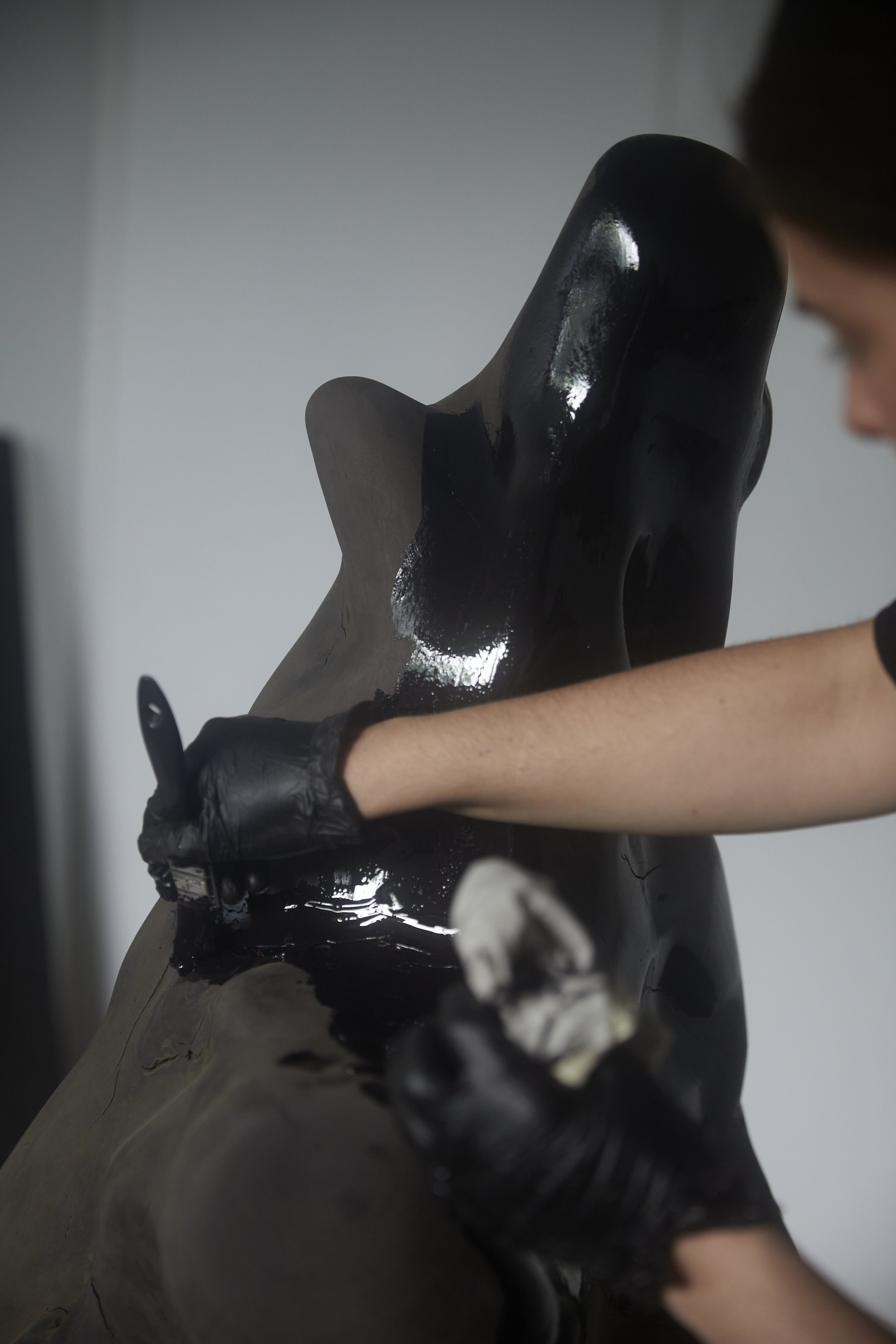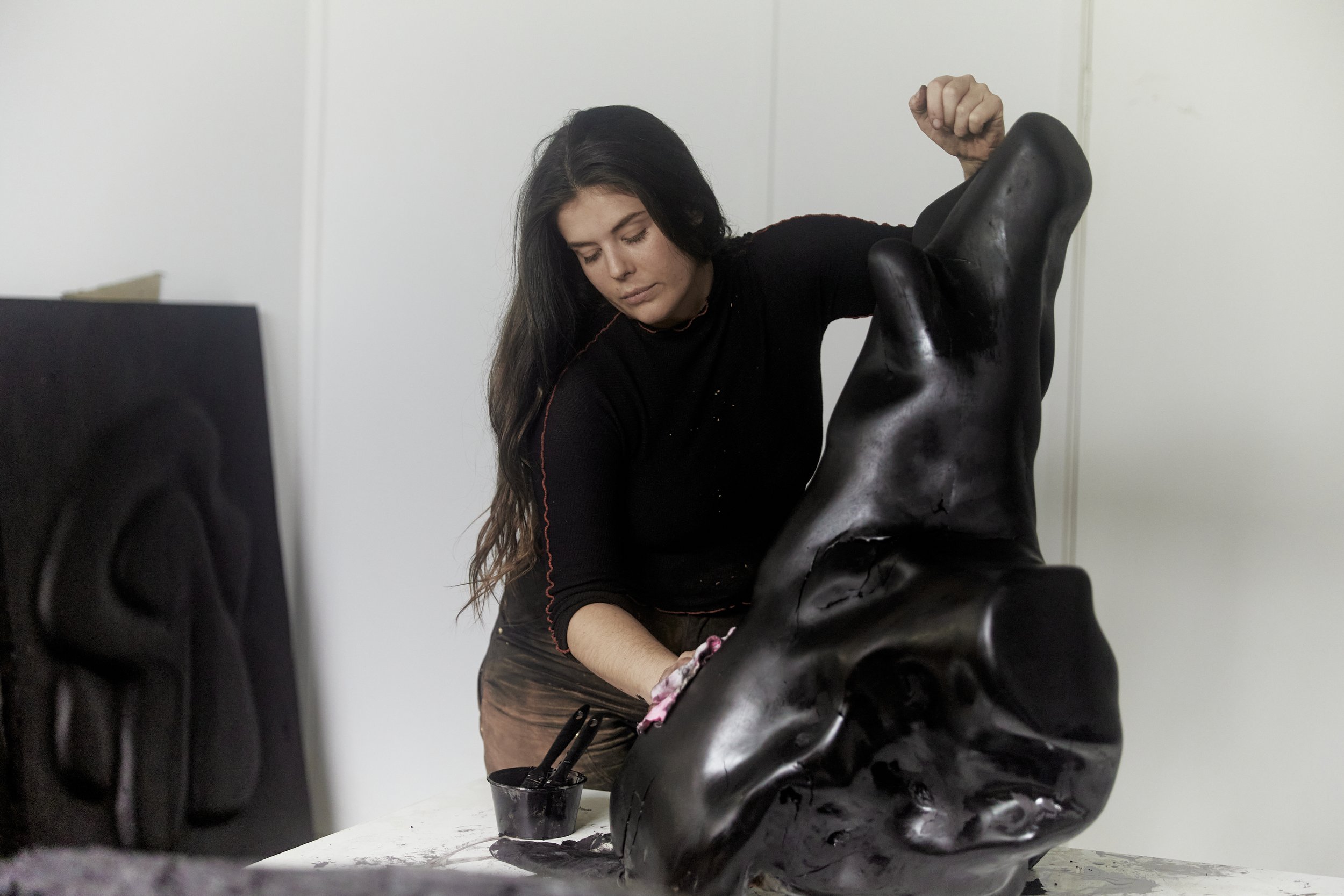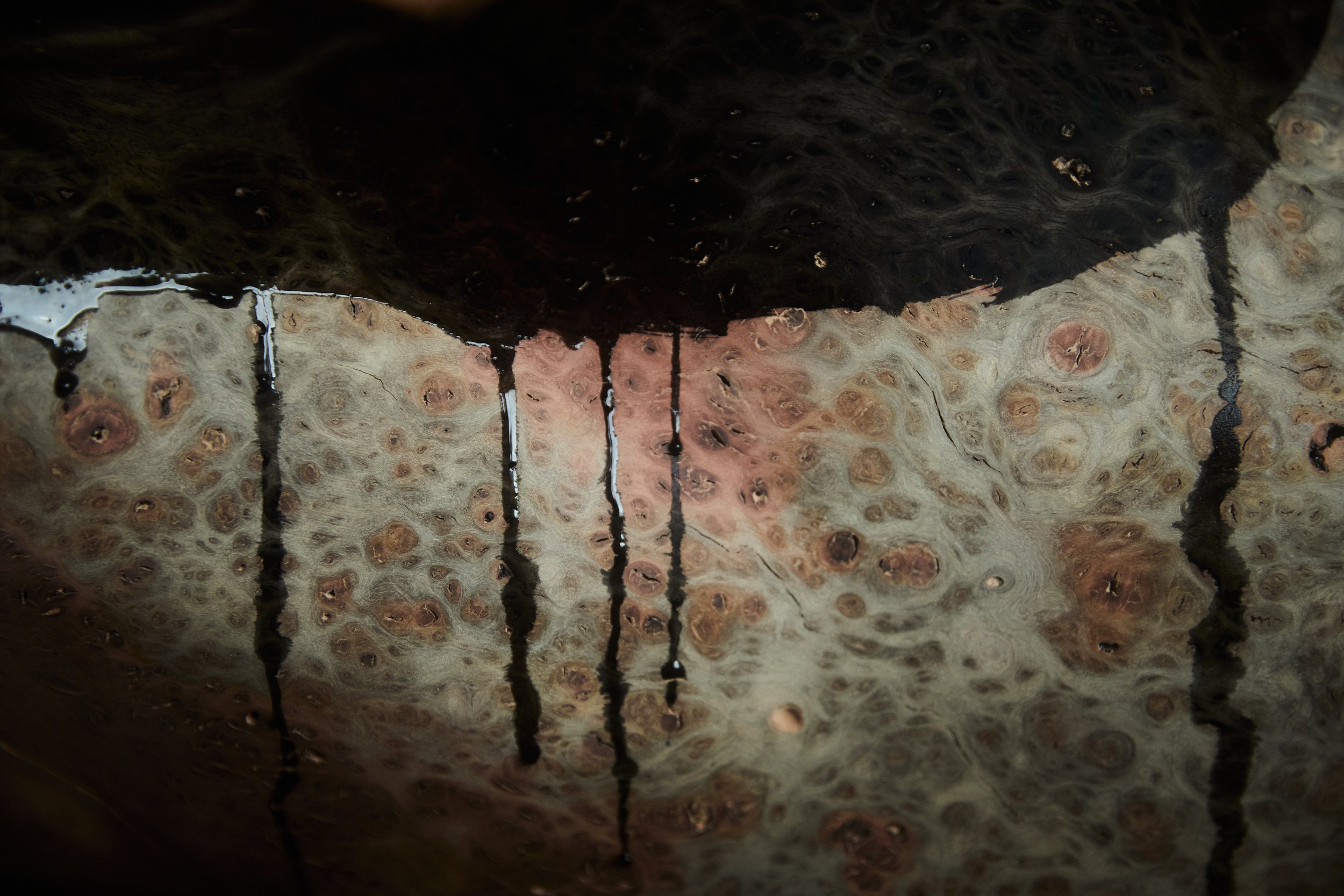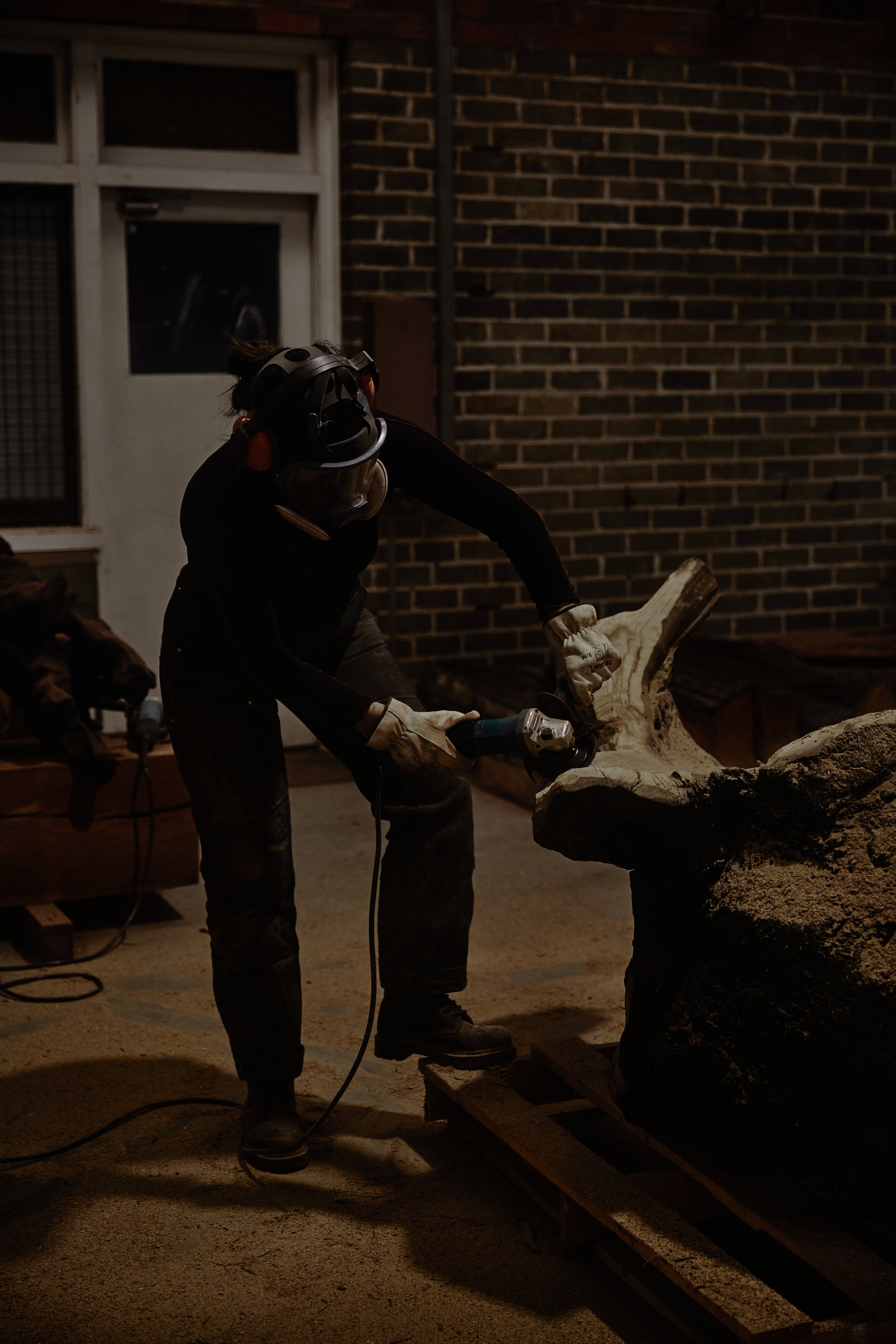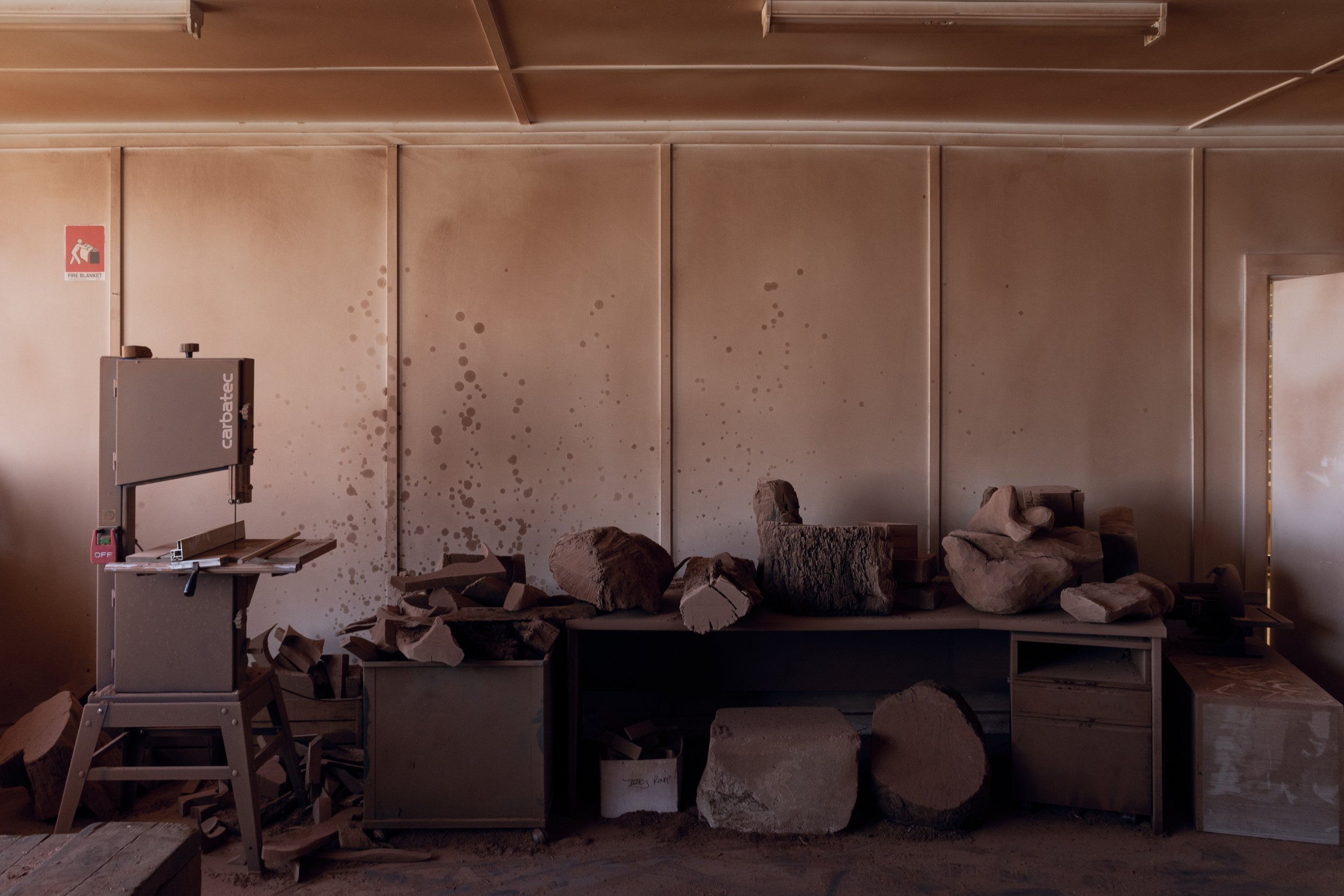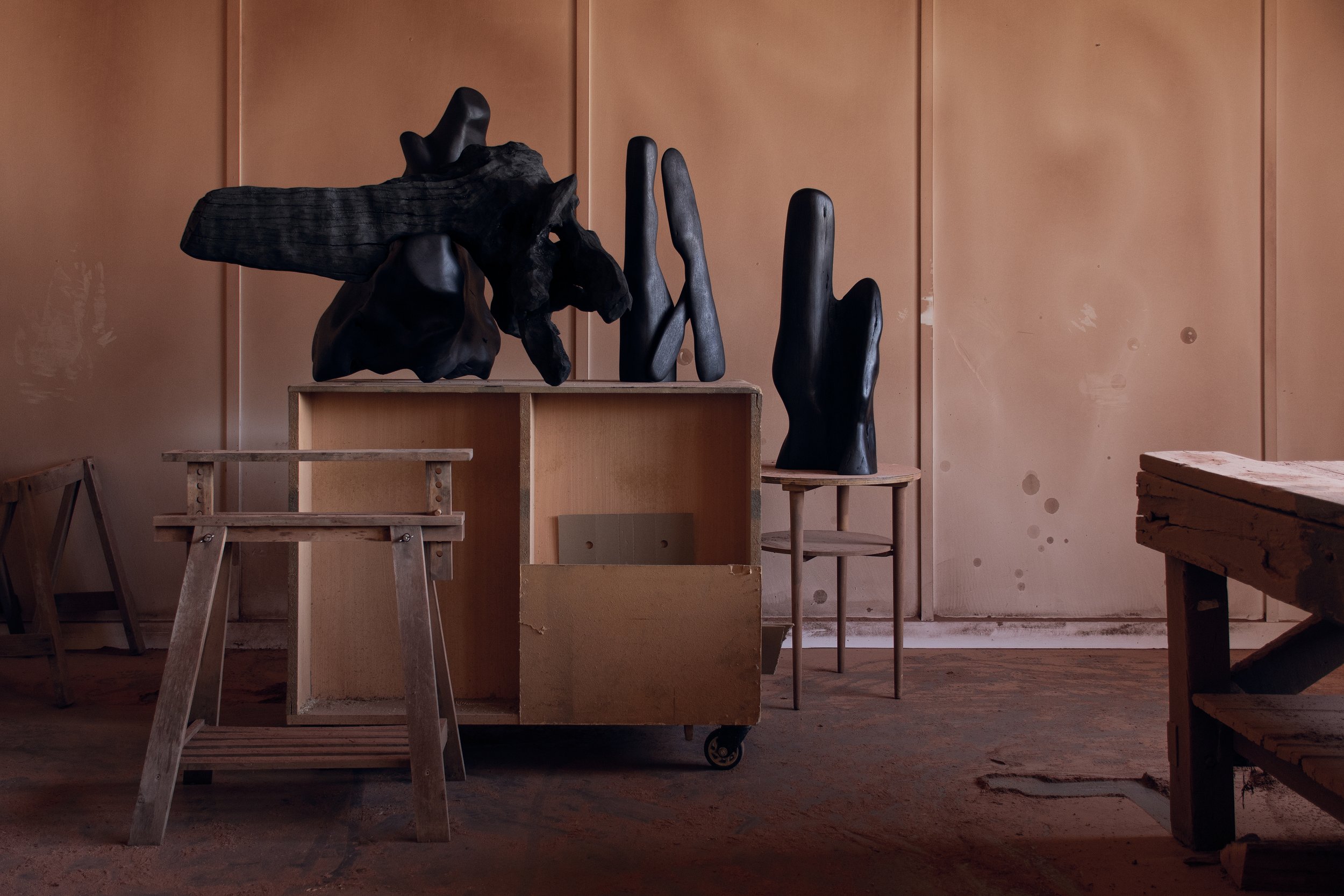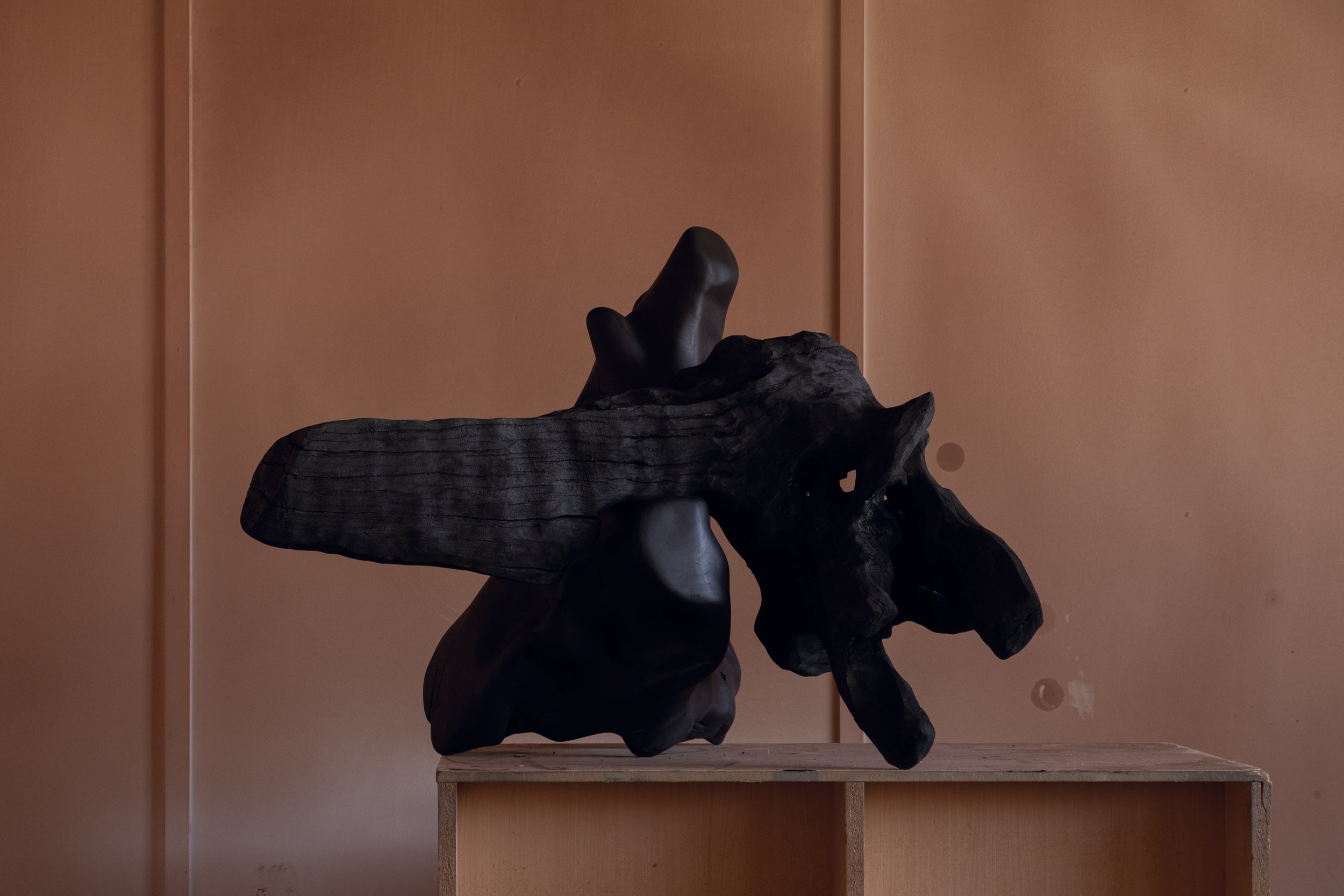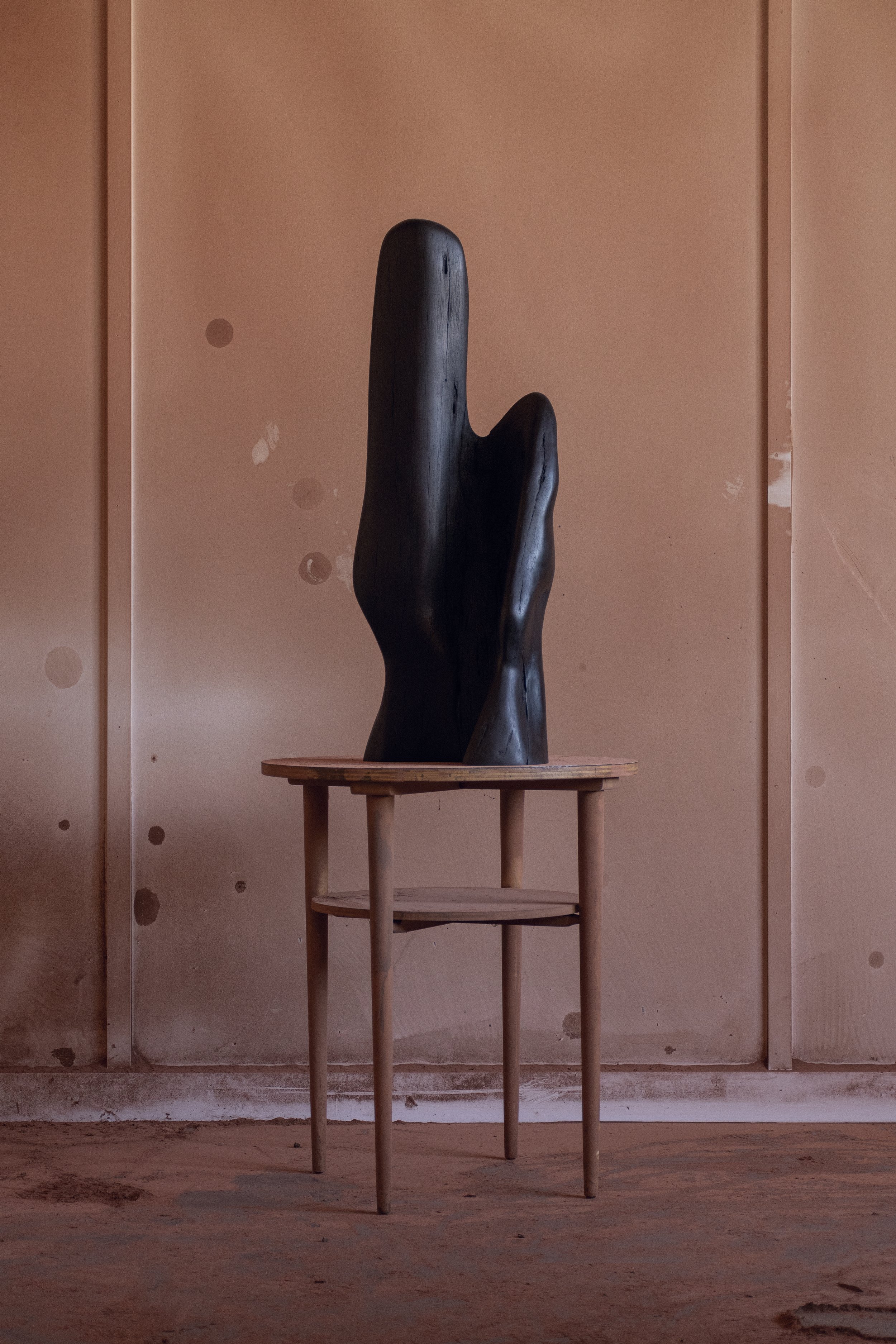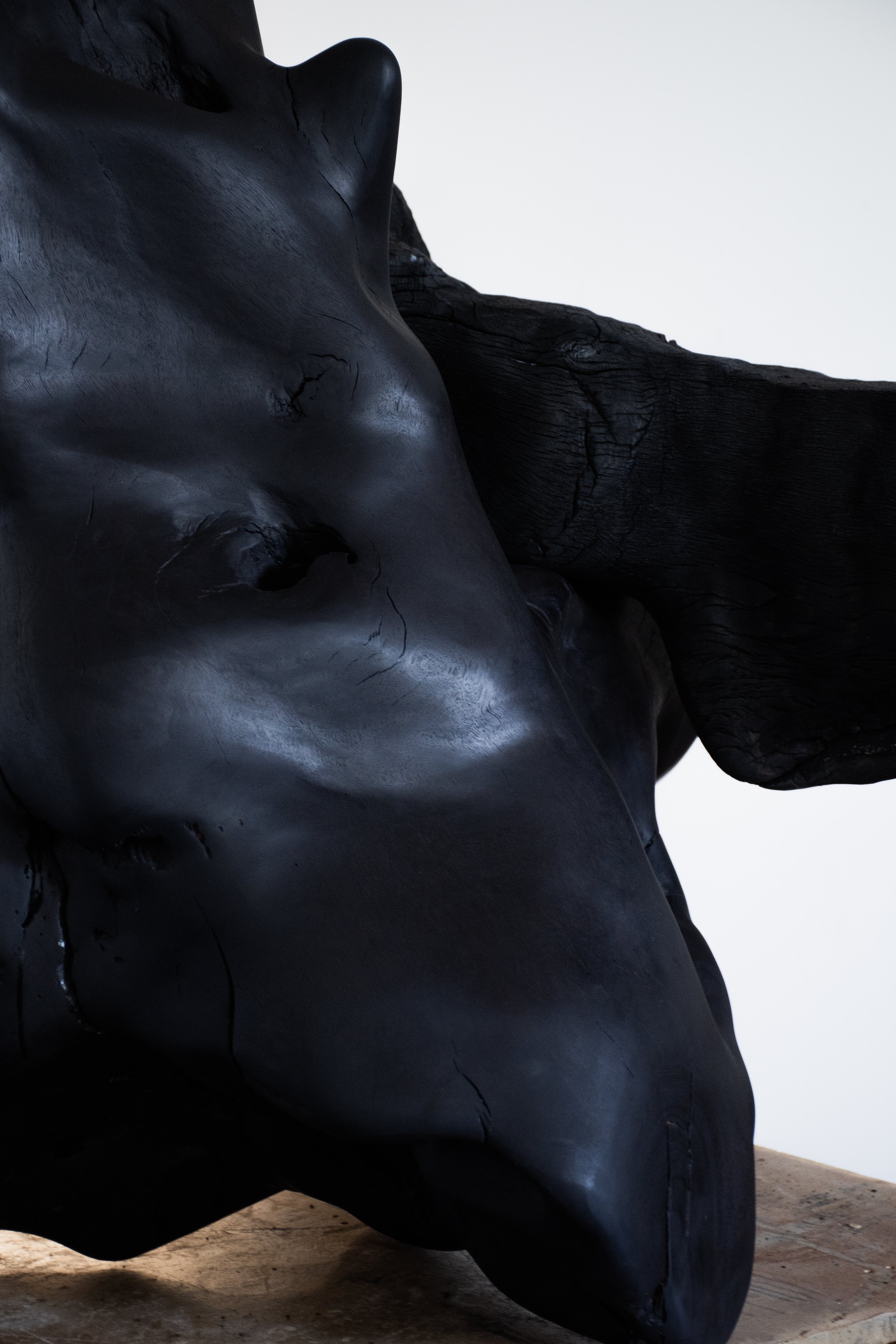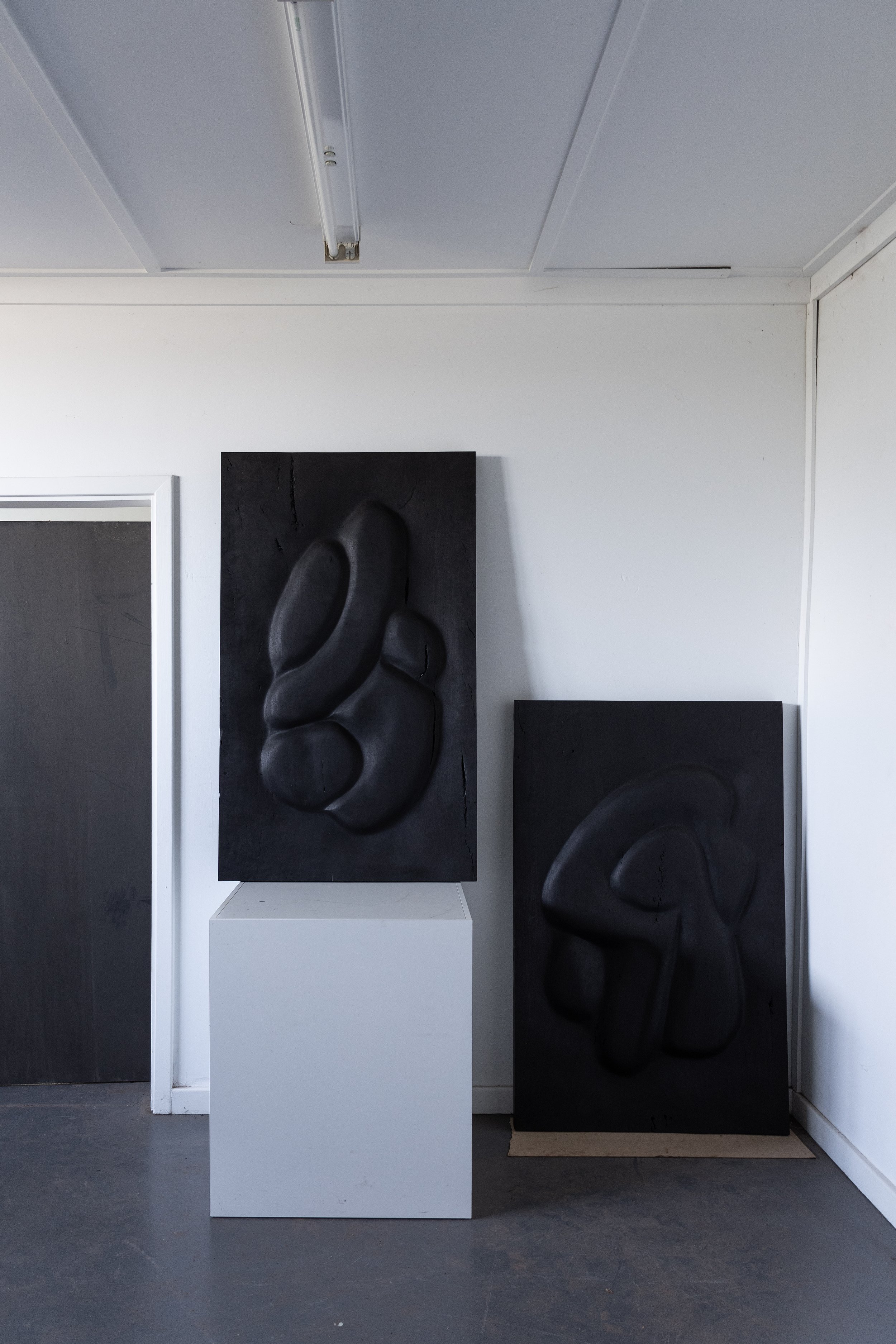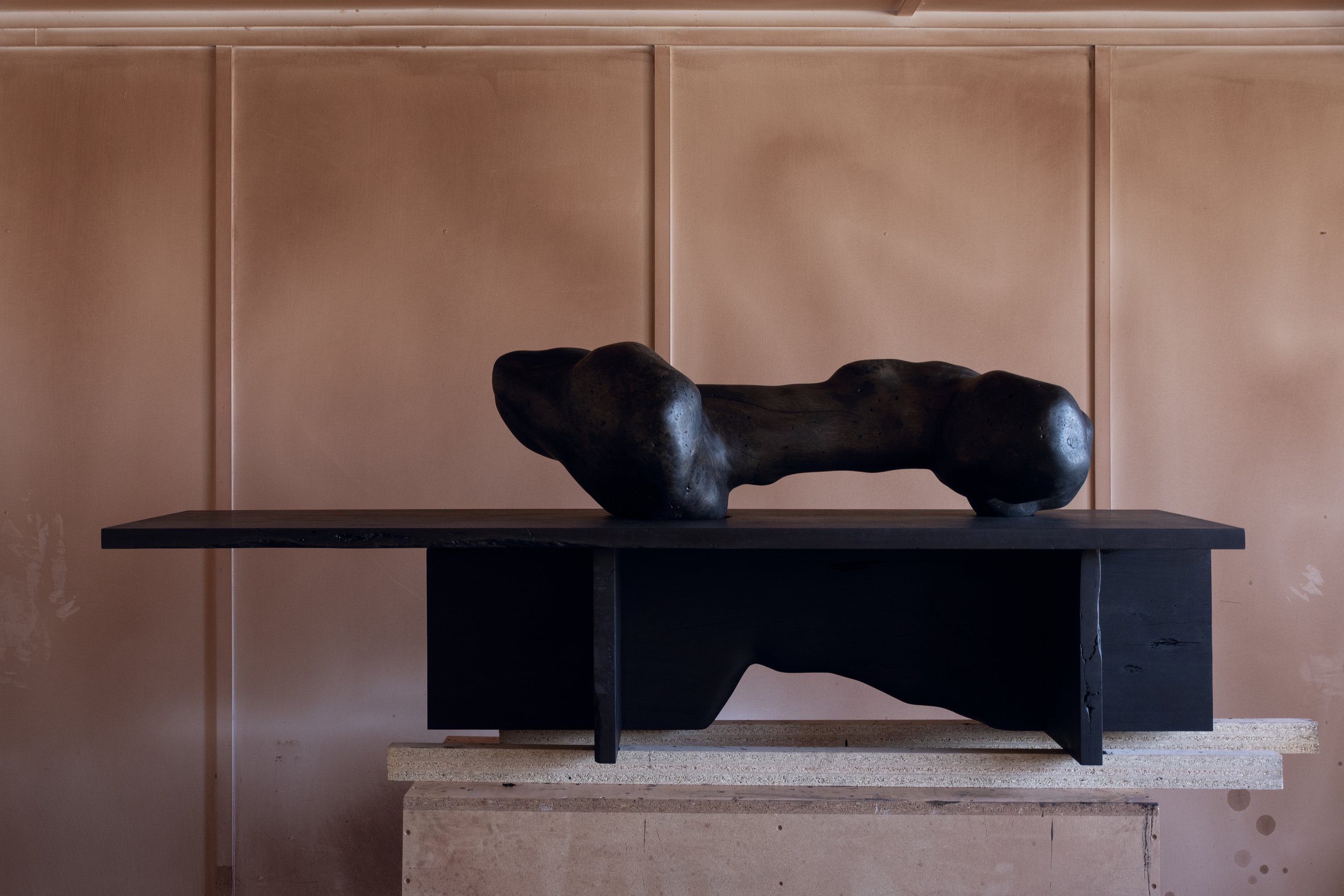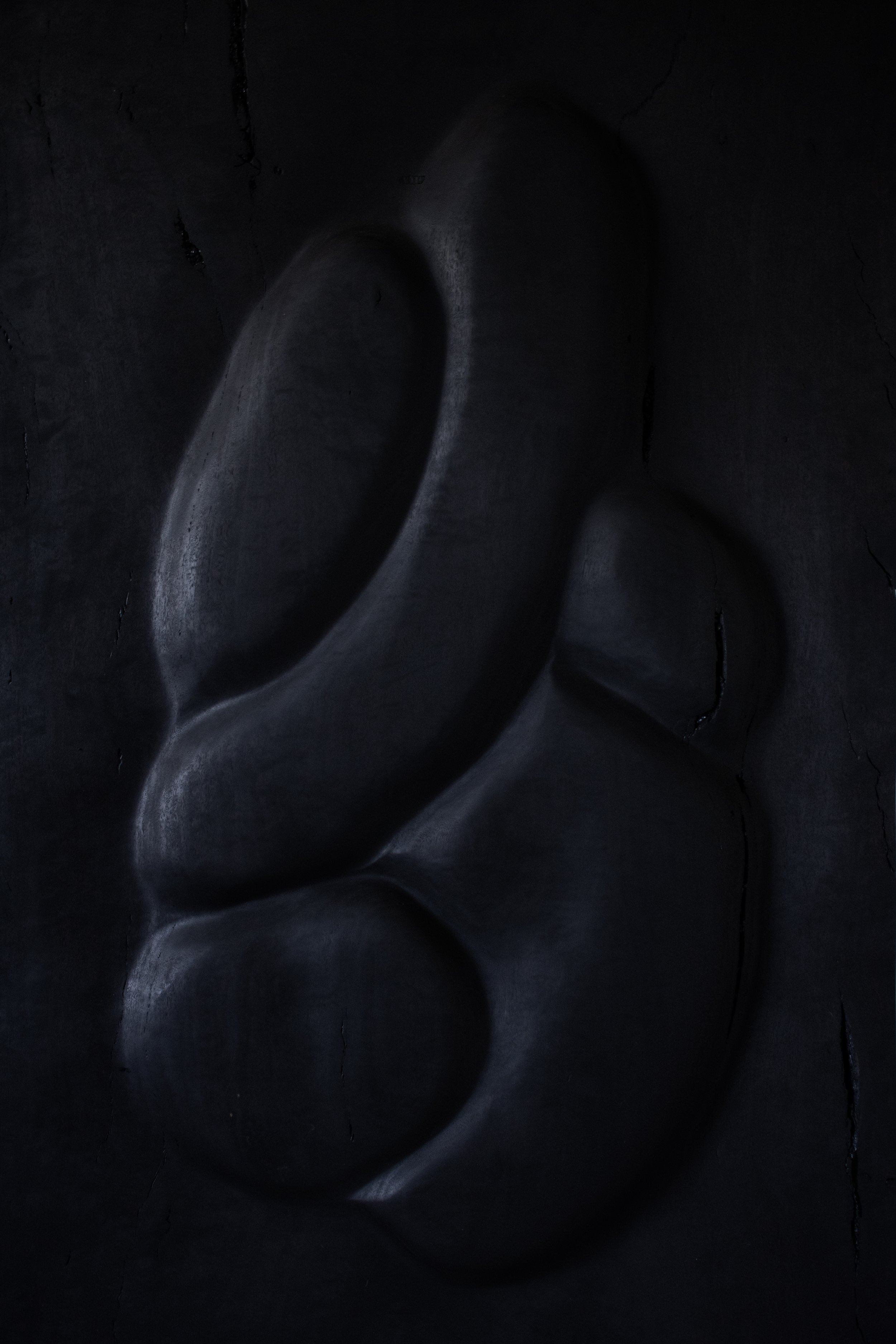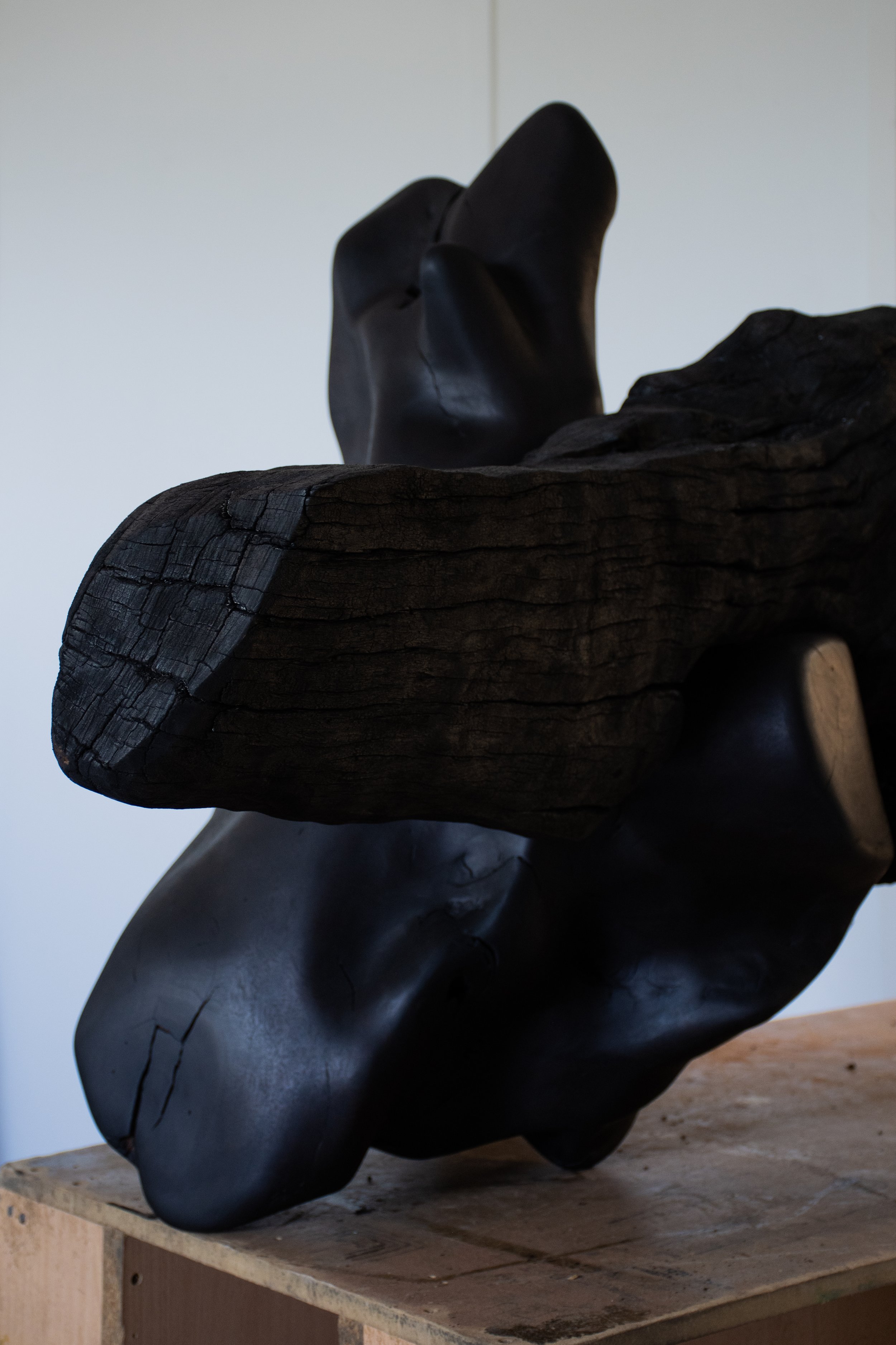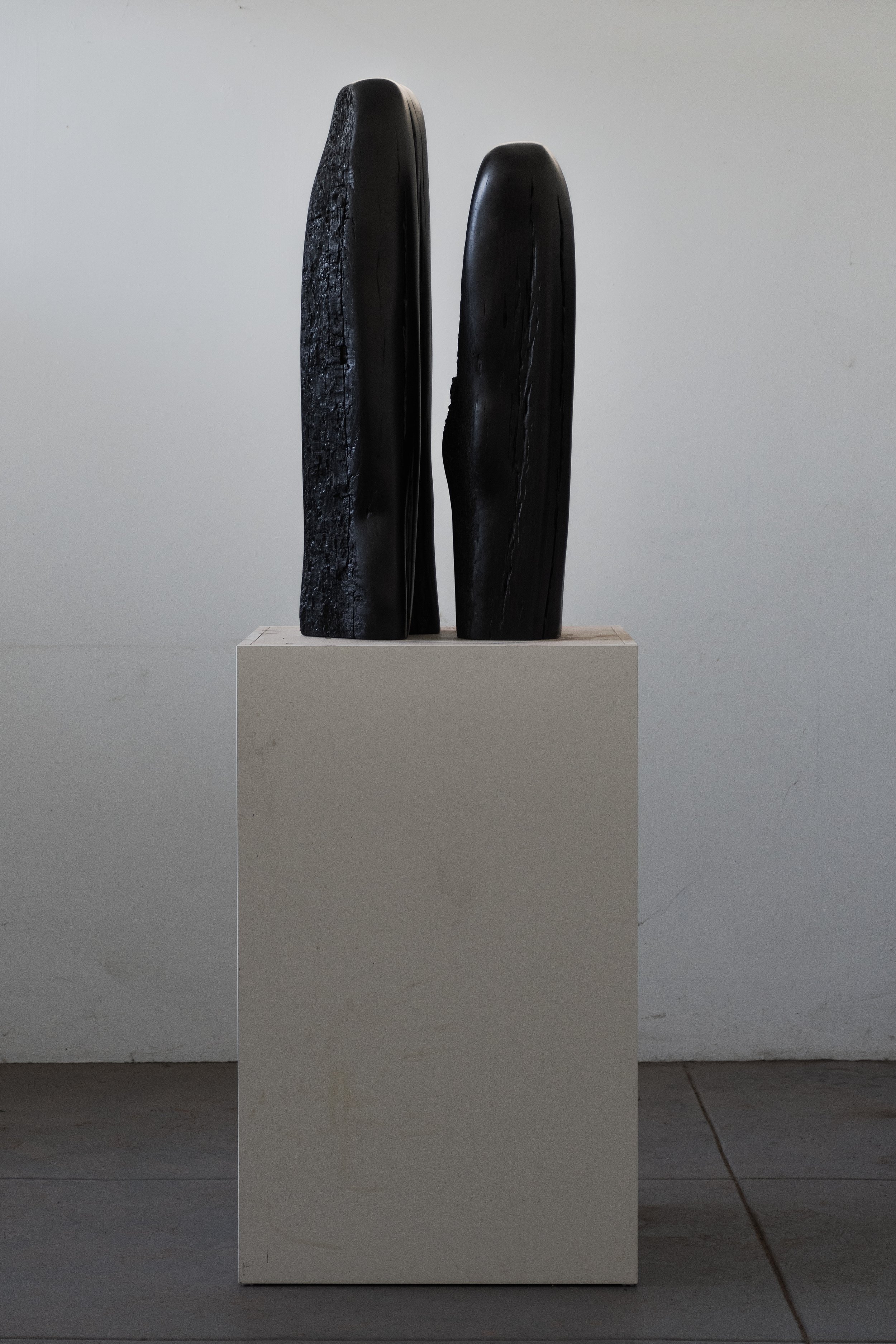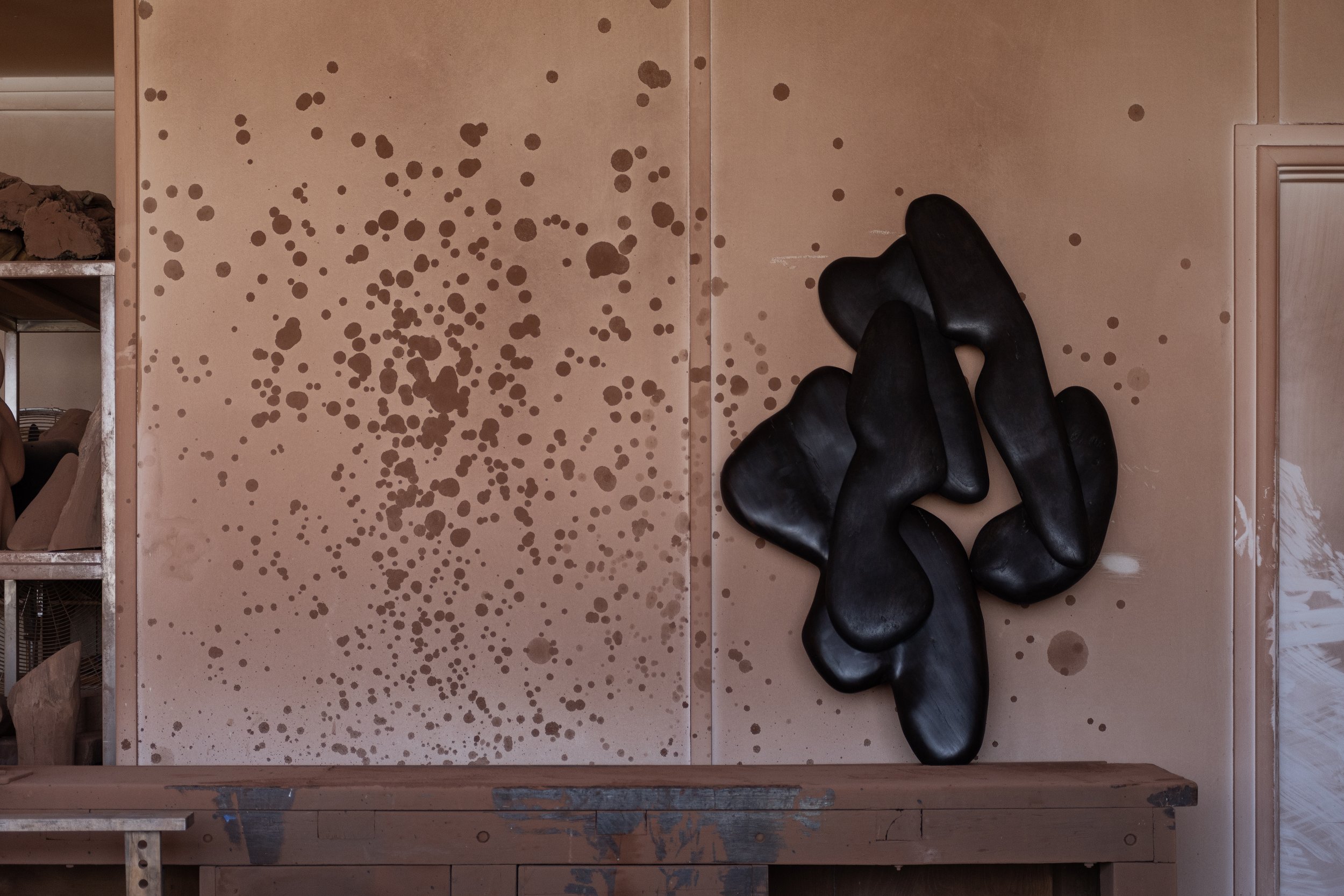Asymptote
Gallery Sally Dan-Cuthbert
Second Solo Exhibition
20 McLachlan Avenue, Rushcutters Bay - September 21st to November 5th 2023
Exhibition Essay by Emma Pegrum
Full Catalogue available at Gallery Sally Dan-Cuthbert
Process images by Olivia Senior, studio works by Nick Fitzpatrick and catalogue photos by the artist.
Asymptote
By Emma Pegrum
If I say ‘asymptote’, what do you feel?
For me, something in the word gently pierces the body, like a needle sliding through dough. I don’t harden against it, I soften around it.
The word describes a mathematic phenomenon: an asymptote is a line that a curve approaches as it moves toward infinity, but never meets. Or, in reverse: a line that constantly approaches a curve that it does not meet at any infinite distance. We get this curve by graphing a function. It is an exercise that helps those interested understand the long term behaviour of systems. Part of me wants to dismiss the word as devoid of emotion, to allow it its neutrality. But I’m pulled to feel something about it instead.
Imagine the formulation of this never-ending line as it extends out across infinity. Imagine the curve that grows alongside it. To do so is a new way to realise the futility of any attempt to comprehend infinity. As the lines run off the imagined page, so too the mind. Do you, like me, find yourself cast out?
It is also disconcerting, in a way, the image of these two lines lengthening in perpetuity, at once independent from and co-dependent on, or at least consequential to, one another. Without the curve, there is no asymptote. Without the asymptote, the curve loses meaning. Replace one curve with another, and the asymptote, too, needs replacing.
What is it to exist solely in relation to something else that, by virtue of its very trajectory, cannot be seen or felt, that cannot be met? To face obliteration should that other thing change or cease to be?
I look at Olive Gill Hille’s work in Asymptote and consider this. What might she think of such questions? The 10 new works that sit here, wrangled and carved and sanded and shaped in Jarrah, Sheoak and Eucalptyus; what do they tell me about this? I see an artist who is searching for something. One who might, would it not render her effort invisible, continue enraptured and rough gloved to work the wood down to nothing. She chooses instead to practice restraint. In Prelude, a wall piece comprised of two stripped back, burned-out lengths of Jarrah arranged next to each other, Olive simply emphasises with her tools and her intuition the natural way of the material. Where she does carve more rigorously, as in Convergence and Conflux, which both appear formed of a volcanic oozing, she favours biomorphic forms, retaining the character and will of the wood. I see an artist who is searching for something, but who stops short of a line.
I imagine a person extending out into infinity.
Olive tells me she made this work as a reflection on human touch in the context of romantic intimacy. Specifically, the moment before touch. You know, that moment in the split second before a new lover’s hand lands on the small of one’s back, or before lips lock? In its tension, is this moment not some version of the infinitely un-meeting? If we map the body’s tension—its desire—on a graph, and we wish to extend it forever, fulfilment is the line it cannot meet; the asymptote. In the bodily realm, even if the asymptote is broken, the conditions are almost immediately reset: new curve, new line. We discover that the thing on the other side of satisfaction is renewed desire.
But within that brief suspension of all framing, where the outlines of ourselves vibrate and dissolve and our flesh stretches through time, our senses are heightened as much by the possibility that impact may never occur as by the knowledge it is about to. (When we say that anticipation might kill us, what we mean is that it makes us feel alive.)
Our bodies have a tendency to preserve such moments as fragments. It isolates them from the surge of desire and, sporadically as time passes, delivers them back to us as frozen and enthralling examples of experiencing infinity.
Is this the true wonder of desire? Its capacity to suspend time, to bend and erase it. If this is what it is to experience infinity, then what happens in the theoretical realm where the moment of impact never arrives? We cannot exist in this mortal body in a time with no end. When your body is finite, infinity feels like falling: we are lead bullets in a vacuum. We lose ourselves in cosmic slipstream. First our footing goes, then our minds. Our hearts, heavy and obstinate, go last. Desire must meet its line, it must be met by the thing it nears, even if only to trigger a reset.
Touch. The slack tightening. And again. Transitory brushes with infinity, infinitely repeating.
If we take touch—rather than the anticipation of it— as our focus, two seats become the centre of Olive’s Asymptote: Bones and Untitled Chair, wrought from ebonised Jarrah and Eucalyptus respectively. These pieces present us with an opportunity to anchor ourselves to and in the work: they draw us back to our bodies. They epitomise the way in which Olive’s work is, always, an invitation to make contact, to cross the line.
Elsewhere, this clear directive to touch gives way to the suggestion that you could. I am suspended again. Can I touch? We are in a gallery, after all.
Quite apart from our own agency, the works in Asymptote have their own relationships. Take Interface 1, Interface 2 and Asymptote, for example—all wall pieces in which the artist’s carved shapes, rendered in relief, emerge like swells in the ocean. Their contours hug close to each other, but I get the sense they might ebb and flow like desire itself, never meeting the threshold.
In Brink, the tension is turned up. Here, two Sheoak figures stand apart, their imparted curves at once yielding toward and warping away from each other. Where is the line? I can’t see it exactly, but I can sense it somewhere between them. As I look, they withhold.

